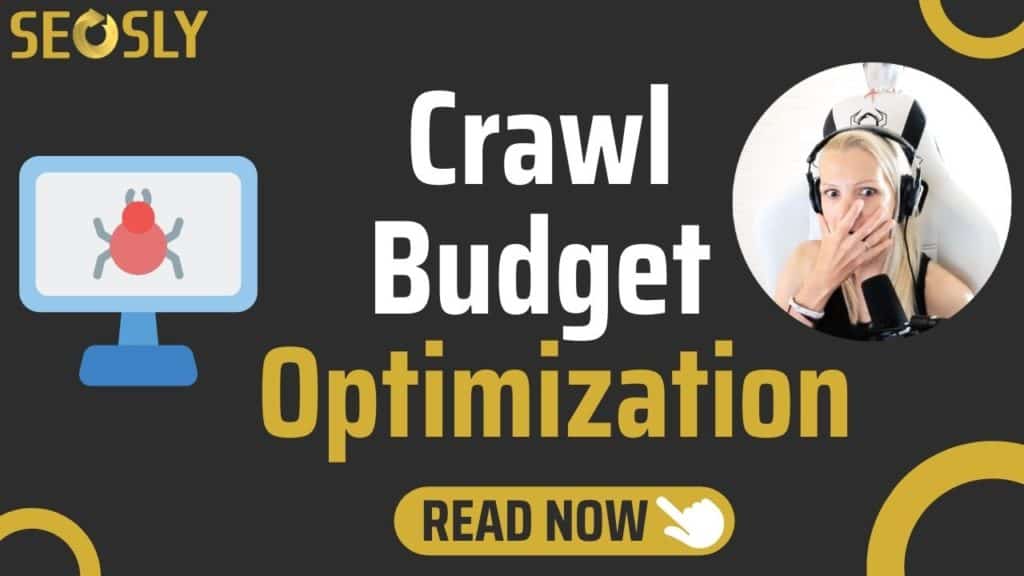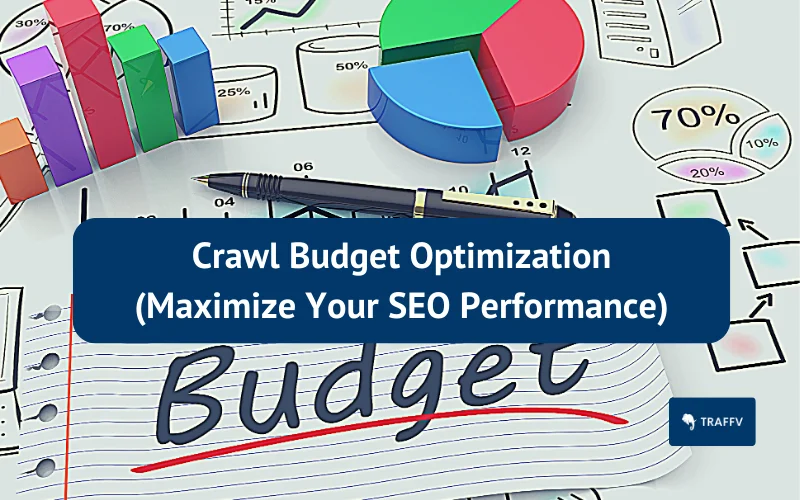
In the ever-evolving world of SEO, one concept has become increasingly vital for website owners and digital marketers: Crawl Budget Efficiency. As search engines like Google continue to refine their crawling processes, ensuring that bots only access valuable pages is crucial for maintaining strong search visibility.
This article will guide you through the fundamentals of crawl budget efficiency, why it matters, and how to implement it effectively. Whether you’re managing a small blog or a large enterprise site, understanding and optimizing your crawl budget can significantly impact your SEO performance.
What Is Crawl Budget Efficiency and Why It Matters
Crawl budget refers to the number of pages a search engine bot, like Googlebot, can and will crawl on your website within a given timeframe. It’s not just about the quantity of pages but also about the quality and relevance of those pages.
Crawl budget efficiency is the practice of optimizing your website so that search bots focus on the most important, high-value content while avoiding low-quality, duplicate, or irrelevant pages. This ensures that your site’s resources are used effectively, and search engines can index your best content quickly and accurately.
Why does this matter? Well, if search engines waste their crawl budget on unnecessary pages, they may miss out on indexing your most valuable content. This can lead to lower visibility in search results, slower indexing, and missed opportunities for traffic and engagement.
Moreover, with the rise of dynamic, JavaScript-heavy websites, crawl budget efficiency becomes even more critical. These sites often have complex structures and require more computational resources for crawlers to process, making it essential to manage what gets crawled and how often.
How Crawl Budget Efficiency Impacts SEO Performance
Crawl budget efficiency directly affects several key SEO metrics:
- Indexing Speed: Efficient crawling means your new or updated content is indexed faster, which can improve your visibility in search results.
- Search Visibility: By directing crawlers to your most relevant pages, you increase the likelihood that these pages will rank well for targeted keywords.
- User Experience: A well-optimized crawl budget reduces server load and improves page speed, both of which contribute to better user experience and higher rankings.
- Technical SEO: Properly managing your crawl budget helps identify and fix issues like broken links, duplicate content, and poor site architecture.
Additionally, crawl budget efficiency aligns with broader SEO principles such as E-E-A-T (Experience, Expertise, Authoritativeness, Trustworthiness). By ensuring that search engines can easily find and understand your content, you reinforce your site’s credibility and authority.
Step-by-Step Implementation Framework
Optimizing your crawl budget requires a structured approach. Here’s a step-by-step framework to help you get started:
1. Define or Audit the Current Situation
Start by analyzing your website’s current crawl behavior. Use tools like Google Search Console, Screaming Frog, or Seobility to:
- Identify which pages are being crawled.
- Check for duplicate content, low-value pages, or pages with no clear purpose.
- Analyze crawl frequency and detect any anomalies.
2. Apply Tools, Methods, or Tactics
Once you’ve identified areas for improvement, apply the following strategies:
- Use robots.txt: Block non-essential URLs, such as admin pages, internal search parameters, or dynamically generated URLs that don’t add value.
- Implement canonical tags: Help search engines understand which version of a page should be indexed when there are multiple similar pages.
- Optimize internal linking: Ensure that important pages are linked from high-authority sections of your site, guiding crawlers to your most valuable content.
- Minify CSS and JavaScript: Reduce the amount of data that needs to be crawled and processed, improving both crawl efficiency and page speed.
- Use sitemaps: Provide an XML sitemap to help search engines discover and prioritize your most important pages.
3. Measure, Analyze, and Optimize
After implementing changes, monitor the impact using the following KPIs:
- Crawl demand: Track how often Googlebot visits your site and which pages it prioritizes.
- Indexation rate: Monitor how quickly new pages are indexed.
- Server response time: Ensure your site is fast enough to handle crawling without overloading your server.
- Bounce rate: If users are leaving your site quickly, it could indicate that search engines are crawling irrelevant pages.
Use tools like Google Analytics, Search Console, and Ahrefs to track these metrics and make adjustments as needed.
Real or Hypothetical Case Study
Let’s look at a hypothetical example of a mid-sized e-commerce site that struggled with crawl budget inefficiency.
Background: The site had over 50,000 product pages, many of which were duplicates or low-quality. Googlebot was spending too much time crawling irrelevant pages, leading to slow indexing and poor rankings.
Solution: The team implemented the following steps:
- Blocked URL parameters that created duplicate content using
robots.txt. - Removed unused JavaScript files and optimized remaining scripts.
- Improved internal linking to direct crawlers to high-value product pages.
- Created a comprehensive XML sitemap and submitted it to Google.
Results: Within three months, the site saw a 40% increase in indexed pages and a 25% improvement in organic traffic. Search engines were now focusing on the most relevant content, leading to better visibility and higher rankings.
Tools and Techniques for Crawl Budget Efficiency
Here are some of the most effective tools and techniques to help you optimize your crawl budget:
- Yoast SEO Plugin – Offers features like removing unnecessary metadata and optimizing site structure for crawlers.
- Screaming Frog – A powerful tool for auditing your site’s crawlability, identifying broken links, and detecting crawl issues.
- Google Search Console – Provides insights into how Google crawls your site and highlights any indexing problems.
- Seobility – Helps analyze crawl stats, detect redirect chains, and identify pages that are wasting your crawl budget.
- Lumar – Offers detailed crawl analysis and optimization recommendations for large-scale websites.
- Ahrefs – Useful for tracking backlinks, identifying crawl errors, and monitoring site performance.
Future Trends and AI Implications
As AI continues to shape the future of search, crawl budget efficiency will become even more important. With the rise of Generative Search Experiences (SGE) and multimodal search, search engines will need to process more complex content, including images, videos, and interactive elements.
This means that efficient crawling will be critical for ensuring that your content is properly understood and ranked. Additionally, AI-driven algorithms will likely prioritize sites that demonstrate technical excellence and user-centric design.
To stay ahead, focus on:
- Improving site architecture to make it easier for AI-powered crawlers to navigate.
- Optimizing for voice and visual search by structuring content in a way that aligns with natural language queries.
- Using structured data to help search engines understand your content more effectively.
Key Takeaways
- Crawl budget efficiency ensures that search engines focus on your most valuable content, improving visibility and rankings.
- Tools like Google Search Console and Screaming Frog can help you audit and optimize your site’s crawl behavior.
- Strategies such as blocking low-value pages, optimizing internal linking, and using sitemaps are essential for efficient crawling.
- Future trends in AI and multimodal search will require even more attention to crawl budget management.
- Continuous monitoring and adjustment are key to maintaining optimal crawl efficiency.
By taking control of your crawl budget, you’re not just improving SEO—you’re building a stronger, more sustainable online presence that can thrive in the evolving digital landscape.
Meta Title: Crawl Budget Efficiency — Ensures Search Bots Crawl Only Valuable Pages
Meta Description: Learn how to optimize crawl budget efficiency to ensure search bots focus on your most valuable pages, improving visibility and rankings.
SEO Tags: crawl budget, SEO optimization, search visibility, technical SEO, website performance
Internal Link Suggestions:
– [Parameter #1: Search Intent Alignment]
– [Parameter #9: Content Gap Filling]
– [Parameter #18: Distinct Value Proposition]
External Source Suggestions:
– https://developers.google.com/search/docs/faq/crawl-budget
– https://www.searchenginejournal.com/crawl-budget/374629/
– https://yoast.com/crawl-optimization/







